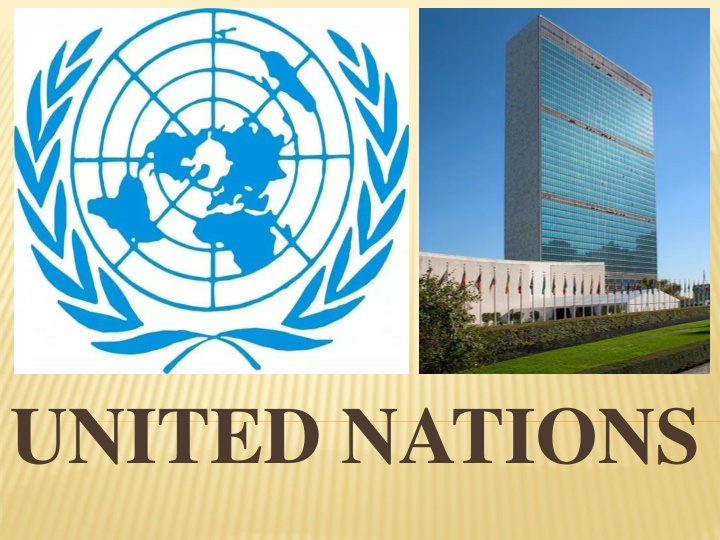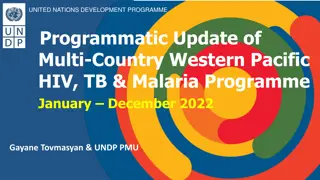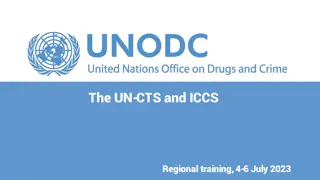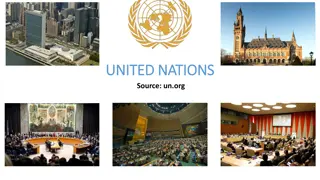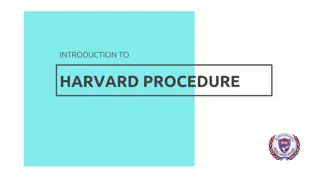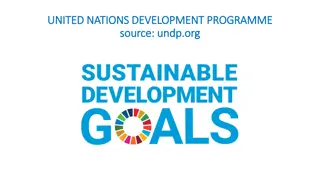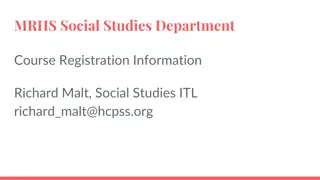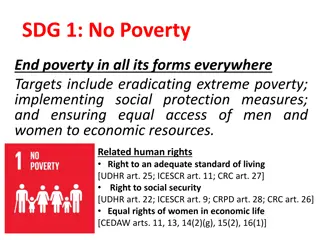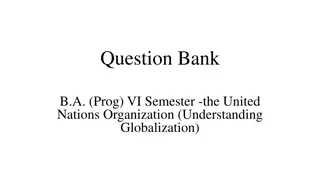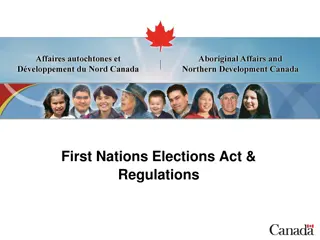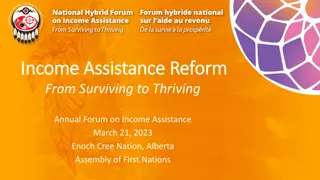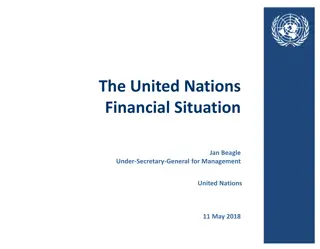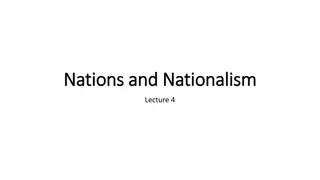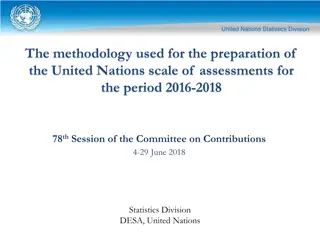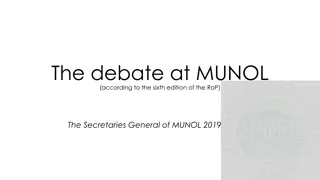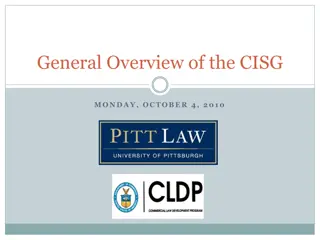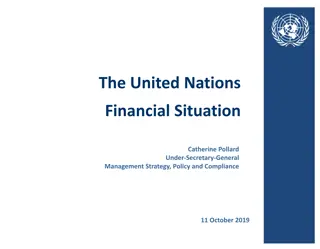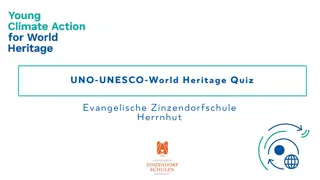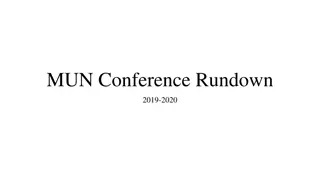Brief Overview of United Nations Activities and History
The content provides insights into the United Nations, including its definition, structure, major activities, and historical glimpses. It covers the UN's role in maintaining peace, protecting human rights, promoting progress, and providing humanitarian assistance. Details on the organization's membership, headquarters, official languages, and founding history are also included.
Download Presentation

Please find below an Image/Link to download the presentation.
The content on the website is provided AS IS for your information and personal use only. It may not be sold, licensed, or shared on other websites without obtaining consent from the author.If you encounter any issues during the download, it is possible that the publisher has removed the file from their server.
You are allowed to download the files provided on this website for personal or commercial use, subject to the condition that they are used lawfully. All files are the property of their respective owners.
The content on the website is provided AS IS for your information and personal use only. It may not be sold, licensed, or shared on other websites without obtaining consent from the author.
E N D
Presentation Transcript
QUESTIONS 1. Definition. 2. Some Glimpses of the UN History. 3. The UN Structure. 4. Major UN Activities and Its Evaluations.
DEFINITION The UN is a global IGO whose tasks include: 1) Maintenance of international peace and security; 2) Protection of human rights; 3) Promoting social and economic progress; 4) Environment protection; 5) Humanitarian assistance in case of natural disasters, famine, and armed conflicts.
DEFINITION The UN may include only the independent states, subjects of international law, recognized as such by global community. Today the organization consists of 193 member states and two members (Switzerland and the Vatican) having observer status.
DEFINITION The main UN Headquarters is located in New York (USA). Headquarters and offices of the UN bodies and specialized agencies are located in Berne, Geneva, The Hague, London, Madrid, Nairobi, Paris, Rome, Vienna, Washington.
DEFINITION The official languages of the organization are: 1) Arabic; 2) Chinese; 3) English; 4) French; 5) Russian; 6) Spanish.
SOME GLIMPSES OF THE UN HISTORY The detailed plan for a global IGO to replace the discredited League of Nations was developed in 1939 by the American State Department. The term United Nations was proposed by the US President Franklin Roosevelt to designate the anti-Hitler coalition and first used officially in the Declaration of the United Nations signed on 1 January 1942.
SOME GLIMPSES OF THE UN HISTORY At the Dumbarton Oaks Conference (USA, August-October 1944), the representatives of the USA, USSR, Great Britain, and China agreed on (a) the aims of the UN, (b) its structure, and (c) the conditions of membership. At the Yalta Conference (February 1945), the Allied leaders decided to allow the nations which had joined the anti-German and anti- Japanese coalition by 1 March 1945, a free entry into the organization.
SOME GLIMPSES OF THE UN HISTORY In April-June 1945, the international conference took place in San Francisco (USA) with the participation of the representatives of fifty nations and those of several influential international bodies, where the UN Charter was adopted on 26 June 1945, which should enter in force after its ratification by the legislative bodies of the USA, USSR, Great Britain, France, and China, as well as those of the most of the other participants of the conference.
SOME GLIMPSES OF THE UN HISTORY The UN Charter came into force on 24 October 1945, and this date is being celebrated worldwide ever since as The International Day of the United Nations. There were 51 member states in the organization at the time of its establishing.
SOME GLIMPSES OF THE UN HISTORY In December 1945, both houses of the US Congress unanimously adopted a decision to deploy the main UN Headquarters in the United States. The leadership of the organization had adopted this requirement having agreed to place its Headquarters in New York.
SOME GLIMPSES OF THE UN HISTORY The deterioration of the American-Soviet relations since the beginning of the Cold War became an obstacle to the effective operation of the UN peacekeeping and the prevention of the armed conflicts. The only exception was a Security Council resolution endorsing the interference of the international coalition led by the USA with the Korean War which became possible due to the Soviet boycott of the Security Council activities.
SOME GLIMPSES OF THE UN HISTORY A resolution 181 (1947) may be mentioned as an example of the UN success in the early years of its existence implying the partition of Palestine and the creation of the Arab and Jewish states. In 1949, a truce was signed with the UN participation in the 1st Arab-Israeli war followed by the partition of Palestine and the creation of Israel. However, the UN did nothing to prevent the Soviet invasion of Hungary in 1956.
SOME GLIMPSES OF THE UN HISTORY Decolonization and the emergence of a large number of independent states on the ruins of the former colonial empires at the turn of 1950-60s caused significant changes in the balance of power within the UN.
SOME GLIMPSES OF THE UN HISTORY Thus, the adoption of The Joint Declaration of 77 (15 June 1964) marked the beginning of The Group of 77 activities, which included developing countries seeking to transform the UN into a platform to defend their political and economic interests. Nowadays, this group includes 133 countries.
SOME GLIMPSES OF THE UN HISTORY A consequence of the balance of power change in the UN was weakening of the US within the organization. One of the manifestations of it was the removal of the representative of the Republic of China on Taiwan from the permanent members of the UN Security Council and transfer of the permanent seat to the representative of the People s Republic of China, which took place on 25 October 1971, in spite of the negative attitude of the USA and became possible due to the support of the developing countries.
SOME GLIMPSES OF THE UN HISTORY Despite the opposition of the US and its main ally in the Middle East, Israel, a group of developing countries with the active support of the USSR adopted Resolution 3379 (1975) condemning Zionism as a form of racialism and racial discrimination, which was canceled only in 1991.
SOME GLIMPSES OF THE UN HISTORY Later, the failure of the UN mediation efforts in the Arab-Israeli conflict, the India-Pakistan conflict over Kashmir border, the efforts to end the war in Vietnam coupled with the strengthening of the role of the Third World in international relations caused an increase in the value of social and economic issues within the UN, leading to: 1) Expenses on peacekeeping operations reduction; 2) Increase in the UN economic and social programs budget.
SOME GLIMPSES OF THE UN HISTORY After the end of the Cold War and the USSR collapse there was a staggering increase in the number of international conflicts and strengthening of the UN peacekeeping role. Thus, in 1988-2000, the number of resolutions adopted by the Security Council doubled, while the costs of peacekeeping operations grew more than tenfold. During this period, the UN organized more peacekeeping missions than in its entire preceding history.
SOME GLIMPSES OF THE UN HISTORY The UN mediation efforts contributed to: 1) Cessation of the civil war in El Salvador (1979-92); 2) Settlement of the Namibian conflict (1989-90); 3) The first democratic election in Cambodia after the expulsion of the Khmer Rouge (1993); 4) The first post-apartheid election in South Africa (1994); 5) Creation of the international coalition under the flag of the UN to support the Government of Kuwait in repelling the Iraqi aggression (1991).
SOME GLIMPSES OF THE UN HISTORY The UN efforts to resolve the conflicts proved unsuccessful: 1) In Bosnia (1992-95); 2) Somalia (1993); 3) Rwanda (1994).
UN STRUCTURE Organizational structure of the UN includes six main bodies: 1) General Assembly; 2) Security Council; 3) Secretariat; 4) International Court of Justice; 5) Economic and Social Council (ECOSOC); 6) Trusteeship Council (not operational since 1994).
UN STRUCTURE The General Assembly (GA) is the principal representative and deliberative UN body, whose tasks are: 1) Determining the contributions of the member states in the UN budget and control of the budget spending; 2) Appointment of non-permanent members of the Security Council; 3) Other UN agencies reports consideration; 4) Adoption of recommendatory resolutions on major international issues; 5) Appointment of the UN Secretary-General taking into account the views of the Security Council.
UN STRUCTURE The GA meets in the annual sessions held from September to December. The UN Charter provides the possibility of convening an extraordinary session at the request of (a) the Security Council, (b) most UN members, or (c) any individual member of the organization. Each UN member has only one vote in the GA.
UN STRUCTURE Resolutions on (a) peace and security, (b) admission and exclusion of the UN members, and (c) budgetary issues are adopted by a qualified majority (2/3); other decisions are made by a simple majority. The first UN GA session met on 10 January 1946, with the participation of the representatives of 51 states; nowadays, 193 nations participate in the GA.
UN STRUCTURE One of the main bodies of the UN is the Security Council (UNSC) in whose jurisdiction, under the UN Charter, are international security and peace. The (UNSC) consists of 5 permanent and 10 non-permanent members; the latter are elected by the GA for a 2-year period, five per year.
UN STRUCTURE Unlike the UNGA resolutions, those of the UNSC are binding on all the members of the organization. In addition, each of the five permanent members of the UNSC China, France, Great Britain, Russia, and the USA has veto power and may block any resolution of the UNSC.
UN STRUCTURE The adoption of the UNSC resolution requires a minimum of 9 votes out of 15 UNSC members including all the votes of the permanent members. However, permanent member abstention from voting is not a barrier to adopt a resolution.
UN STRUCTURE In recent decades the UNSC was often criticized because of its inability to solve many important problems, since due to the right of veto each permanent member can block any decision seen as unfavorable. As a result, the projects of the UNSC restructuring appear and may be reduced mostly to the increase in the number of its members, permanent and non-permanent.
UN STRUCTURE One of the main UN agencies is the Secretariat headed by the Secretary-General (Ant nio Guterres, Portugal, since 2017) performing his duties with the reliance on an extensive UN staff. The candidacy of the Secretary-General is offered by the UNSC and approved by the UNGA. The Secretary-General is elected for 5 years with the possibility of re-election for another term. Although the UN Charter does not provide limitation of the number of such terms, no Secretary- General held office for more than two terms.
UN STRUCTURE The Secretary-General is elected for 5 years and can be re- elected for another term. Although the UN Charter provides no limitation of the terms number, no Secretary-General has held office more than twice.
UN STRUCTURE According to the unwritten rules, no representative of the UNSC permanent members can hold the post of the Secretary- General. In accordance with the UN resolution adopted in 1997, representatives from different regions ought to be elected the Secretary-General in turn in order to avoid power usurpation and abuses.
UN STRUCTURE The UN members are divided into five regional groups: 1) African; 2) Asian; 3) Eastern European; 4) Latin American Caribbean; 5) Western European (includes Australia, Canada, New Zealand, and the USA).
UN STRUCTURE The UN Secretariat structure comprises the Office of the Secretary including 12 departments and 9 offices responsible for different aspects of the UN functioning, which involve about 44 000 employees.
UN STRUCTURE The selection of candidates for the UN Secretariat is made on a competitive basis according to the results of examinations conducted by the Secretariat representatives in various parts of the world. When selecting candidates, geographical principle is taken into account to ensure fair representation of the different regions of the world in the UN Secretariat.
UN STRUCTURE Functions of the International Court of Justice (ICJ) located in The Hague (Netherlands) are as follows: 1) Resolution by legal means of the disputes which may lead to international conflicts; 2) Advising the UNGA, the UNSC, and other UN entities on various legal issues within the framework of their powers under the UN Charter.
UN STRUCTURE The UNGA and the UNSC elect judges of the ICJ for 9 years with the unlimited right of re-election and the UNSC has no right of veto in this case. Every 3 years the election of the 1/3 of the 15 judges of the ICJ is held for which an absolute majority in the UNGA and the UNSC is necessary.
UN STRUCTURE The selection of the judges of the ICJ is based on the principle of equitable representation of different regions and legal systems of the world. According to the unwritten rules, among the ICJ judges must be 5 representatives from Western Europe, Australia, Canada, New Zealand, and the USA, 3 representatives from Asia and Africa, 2 from Eastern Europe and Latin America. According to the same rules, 5 places in the ICJ belong to the UNSC permanent members.
UN STRUCTURE According to the UN Charter, all the UN members apply the Statute of the ICJ. At the same time, only the UN member states, not individuals or legal entities, can appeal to the ICJ. During its operation since April 1946, the ICJ reviewed over 100 cases.
UN STRUCTURE The ICJ played a crucial role in peaceful resolution of a number of international disputes including territorial disputes between Burkina Faso and Mali (1986), Honduras and El Salvador (1992), Libya and Chad (1994), Botswana and Namibia (1999), Romania and Ukraine (2009).
UN STRUCTURE Functions of the UN Economic and Social Council (ECOSOC), existing since 1945 and including 54 UN members elected once every three years by the UNGA, include: 1) Coordination of economic and social cooperation; 2) Investigating economic and social issues and publication of reports; 3) Holding international conferences on social and economic issues and implementing their decisions.
UN STRUCTURE The ECOSOC holds regular 4-week sessions once a year in July, as well as annual consultations with finance ministers heading key committees of the World Bank and the IMF are held each April, since 1998. The ECOSOC elects its Presidium responsible for (a) preparing the program of the Council and for (b) developing of the sessions agenda. Each state has only 1 vote in the ECOSOC.
UN STRUCTURE The objectives of the UN Trusteeship Council established in 1945, included the organization of the control of former colonies of the powers defeated in the First and Second World Wars, with taking into account the interests of the population of these former colonies as well as the interests of keeping international peace and security.
UN STRUCTURE Since 1945, the system of the UN trusteeship included 11 territories (seven in Africa and four in Oceania). On 1 November 1994, the UN Trusteeship Council suspended its activities after the last of these territories, Palau (Oceania), gained independence on 1 October 1994.
UN STRUCTURE The World Bank Group and the International Monetary Fund (IMF) function as independent UN specialized agencies and were created on the basis of the Bretton Woods agreements (1944) with the observer status in the UN system.
UN STRUCTURE The objectives of the World Bank Group include the provision of financial assistance to developing countries. Since its foundation and until 2012, this organization issued loans totaling $30 billion. The IMF started its operations in 1945, with the initial goal to promote recovery of the global economic and payment system after World War II.
MAJOR UN ACTIVITIES AND ITS EVALUATIONS One of the UN major activities is peacekeeping. The condition for the peacekeeping missions organization is an endorsement by the UNSC. Since the UN does not possess the armed forces of its own, the troops for peacekeeping are provided by member states. The UN peacekeeping forces are sent to the zones of armed conflicts to ensure compliance with the armistice terms and to prevent armed clashes.
MAJOR UN ACTIVITIES AND ITS EVALUATIONS Another of the UN activities is disarmament; the following international treaties were signed with the UN participation: 1) The Outer Space Treaty (1967) prohibiting the deployment of nuclear weapons in outer space; 2) Treaty on the Non-Proliferation of Nuclear Weapons (1968); 3) Treaty on the Prohibition of the Emplacement of Nuclear Weapons and Other Weapons of Mass Destruction on the Sea- Bed and the Ocean Floor and in the Subsoil thereof; 4) The international conventions on biological (1972) and chemical (1992) weapons.
MAJOR UN ACTIVITIES AND ITS EVALUATIONS An important goal of the UN according to its Charter is to protect human rights and fundamental democratic freedoms regardless of race, gender, language, or religion. In 1948, the UNGA adopted the Universal Declaration of Human Rights designed by a committee headed by Eleanor Roosevelt.
MAJOR UN ACTIVITIES AND ITS EVALUATIONS In 1993, the World Conference on Human Rights was convened by the UN Commission on Human Rights in Vienna to monitor the human rights in the world, which was transformed in 2006 into the UN Human Rights Council, including 47 states elected for 3-year term.
